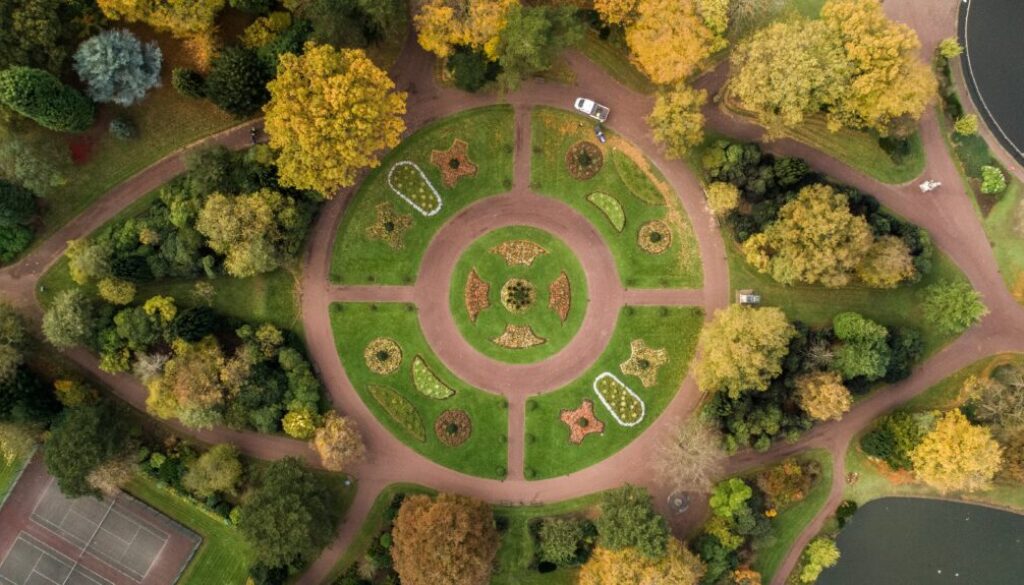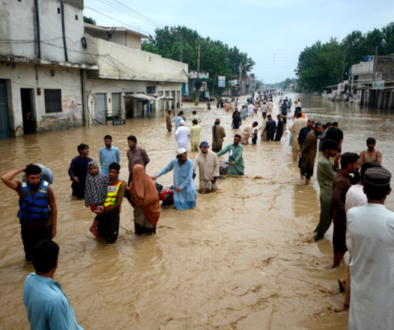What is degrowth and how can it help tackle climate change in an inclusive way?
We are indeed finding ourselves in a geological epoch – aka the Anthropocene – when human activity has become so earth-shaking it is throwing entire ecosystems and the planet’s climate out of balance. As the science behind global warming is becoming ever harder to dismiss, humanity is facing the challenge of shifting climate action into high gear and prioritizing the protection of our environment as soon as possible.
The overwhelming consensus among world leaders is that we need to change how we use the world’s resources. However, our entrenched focus on economic growth based on unfettered consumption has proven a hard habit to break. Perhaps what’s needed –and what more and more economists are starting to argue — is a new approach to success and a restructuring of our current economy. In other words, what we need is sustainable degrowth that puts humanity on a trajectory towards a future where everyone can live a good life within the means of the planet.
What exactly is degrowth?
In 1972, a group of researchers sponsored by The Club of Rome published The Limits of Growth, an iconoclastic report that summarized the findings of a massive computer simulation of world economic and population growth on a planet that has finite resources. While its findings were mostly ignored for several decades, it’s predictions have proven eerily accurate.
A new crop of economists, Jason Hickel for example, concerned with ecological collapse have become more and more influential to policymaker’s and the general public’s understanding alike. Their solution is a “degrowth” approach to living on this planet.
Degrowth is a movement that seeks to rethink GDP (aka, Gross Domestic Product, formerly known a GNP – Gross National Product) as a metric for progress. It postulates that the world must find ways to live within the limits of nature to prevent ecological and social collapse.
More than a movement, “degrowth” is a network of ideas, re-visionings, and strategies. These all come together to reshape the current framework within which our societies function. Degrowth entails that we look beyond economic growth when we think about ways to improve the human condition on Earth – all while considering the planet’s limited natural resources and the context of climate change.
Looking beyond GDP to measure well-being
Economic growth – most often measured by an economy’s annual growth of Gross Domestic Product (GDP) (i.e. the economy’s increase of goods and services produced within a year) – is highly dependent on the use of Earth’s natural resources. Since we live on a finite planet, resources are limited and thus unlimited growth is clearly not feasible – a conundrum that most economists have brushed aside for centuries.
Measuring the well-being of a society by how much its economy grows is also not indicative of well-being nor sustainability. It is also bound to show only part of the whole picture. As the brilliant Hazel Henderson has pointed out, “It doesn’t take a genius to pump up GNP [of a developing country] by burning down rainforests, using slave labor and social repression to keep things in place.”
(Editor’s note: check out this deep dive from our archives on GDP and new metrics for ecological and justice based economies.)
Doughnut Economics and the sweet spot
More recently, the limited capacity of Earth’s natural systems to support our economic expansion has been reflected by the conceptualization of the so-called ‘planetary boundaries’. This concept has gained particular attention outside academia thanks to the British economist Kate Raworth.
The author used the framework to help us all reimagine current economic thinking in her book Doughnut Economics. Raworth economic model, in the shape of a ‘doughnut’, is intended to guide us in our quest to ensure basic needs for all humanity without jeopardizing our planet’s life-supporting systems: a stable climate, healthy biodiversity, protected oceans, and an intact ozone layer.
Her proposed framework suggests that any societal development trajectory must be weary of our planet’s ecological ceiling. As such, the inner border of the ‘doughnut’ model represents the social foundation, the outer border represents the planetary boundaries. In between the two lies the ‘safe and just space’ we should aspire to. That’s the doughnut’s sweet spot!
Unbalanced development
Following decades of accelerated development in the Global North, it’s hard not to argue that most people in most of those developed nations are living a ‘good life’. Of course, what a ‘good’ life entails is highly subjective, but in this case, we mean general living conditions where people’s basic needs are met.
Looking at a global picture of human development, however, it’s easy to see that there is still a lot of work to do before the basic needs of all people on Earth are being met. Achieving that goal is only becoming more difficult. The rapidly warming climate is expected to displace hundreds of millions of people across the globe, most of them from the Global South.
And even today, before the worst effects of climate change have been fully realized, there are still nearly 700 million people on the planet who live with less than US$1.90 a day – the poverty line set by the World Bank.
An equitable path towards reaching a good life for all
The majority of those experiencing acute poverty live in the Global South. Many argue that this part of the world will still require a level of growth in the coming years in order to help ensure that people there enjoy an ethical, beyond-poverty, standard of living.
This is where environmental and climate justice within the degrowth movement comes in. According to Isabelle Anguelovski’s entry in Degrowth: a vocabulary for a new era (a compelling book that does an extraordinary job at spelling out what exactly the concept of degrowth entails), environmental justice relates to
“the right to remain in one’s place and environment and be protected from uncontrolled investment and growth, pollution, land-grabbing, speculation, disinvestment, decay and abandonment.”
Communities in the Global South (particularly indigenous communities) are still undergoing environmental injustices, seeing their land either forcefully taken away or exploited to the level of ecological collapse.

Equitable degrowth: rich countries first to press the degrowth button
Because of these historic and ongoing injustices, degrowthers propose that it is the rich nations that should pursue degrowth to a level that doesn’t overshoot the ecological ceiling. Meanwhile, allow poorer nations ought to develop until a point of ensuring sufficient social wellbeing for their citizens without themselves going over the planetary boundaries.
Going further, the degrowthers suggest, rich countries shouldn’t just put a limit to their growth levels, which actually has happened naturally in many developed nations in recent years, but actually aim for degrowth. Aiming for degrowth would also provide a starting point for addressing the environmental and social justice issues.
The historic injustices caused by the Global North’s historic plundering and depletion of resources originating in the Global South are now further reflected in the issue of climate justice, as the least polluting countries in the world are expected to bear the brunt of the effects of climate change.

Towards inclusive development and climate action
In the context of climate change, and the increasingly scarce ecological capacity supporting our economies, sharing the Earth’s natural resources is a daunting challenge, especially when it comes to issues of justice: The way we approach sharing our limited ecospace should be highly considerate of problematic historic relations between the Global South and Global North.
To ensure the equitable allocation of this ecospace, prominent degrowth advocates such as Prof. Joyeeta Gupta at the University of Amsterdam propose that we devise a global governance system. Such a system would prevent unfair appropriation of resources by bigger global powers. In the current setup of nation-states, this is likely to happen if history is any indication.

The degrowth philosophy is not something new
While movements that reject conventional consumerist tendencies, have primarily flourished in Latin America, as reflected by the Zapatistas in Mexico and the philosophy of Buen Vivir in Bolivia and Ecuador, these movements can also be seen in other parts of the world.
The African philosophy of Ubuntu, for example, which promotes principles of mutual concern like sharing and caring, has existed for centuries. Preservation of life and the environment around them is a key tenet of Ubuntu philosophy. Future generations are seen to have the same rights as present ones, which is why sustainability is inherently integrated within the philosophy’s tenets.
As we work to create a more inclusive, degrowth-driven path towards tackling climate change, perhaps it would be wise to pay close attention to Ubuntu, or perhaps to Bhutan’s Gross National Happiness Index.
The deep integration of principles of sustainability and community solidarity within these philosophies, reflected by the redistribution of wealth and their honest dedication to collective wellbeing, can inspire an alternative imaginary to the current narrative of growth-oriented development, which remains within the same flawed frames of thinking that have led us to global inequality and the climate crisis in the first place.
Additional resources:
Giacomo D’Alisa, Federico Demaria, Giorgios Kallis – Degrowth: a vocabulary for a new era
Kate Raworth – Doughnut Economics: Seven Ways to Think Like a 21st-Century Economist
ScienceDirect – Governance from below and environmental justice: Community water management from the perspective of social metabolism
Journal of Political Ecology – Trees and springs as social property: a perspective on degrowth and redistributive democracy from a Brazilian squatter community
The post What is degrowth and how can it help tackle climate change in an inclusive way? first appeared on The Optimist Daily: Making Solutions the News.





